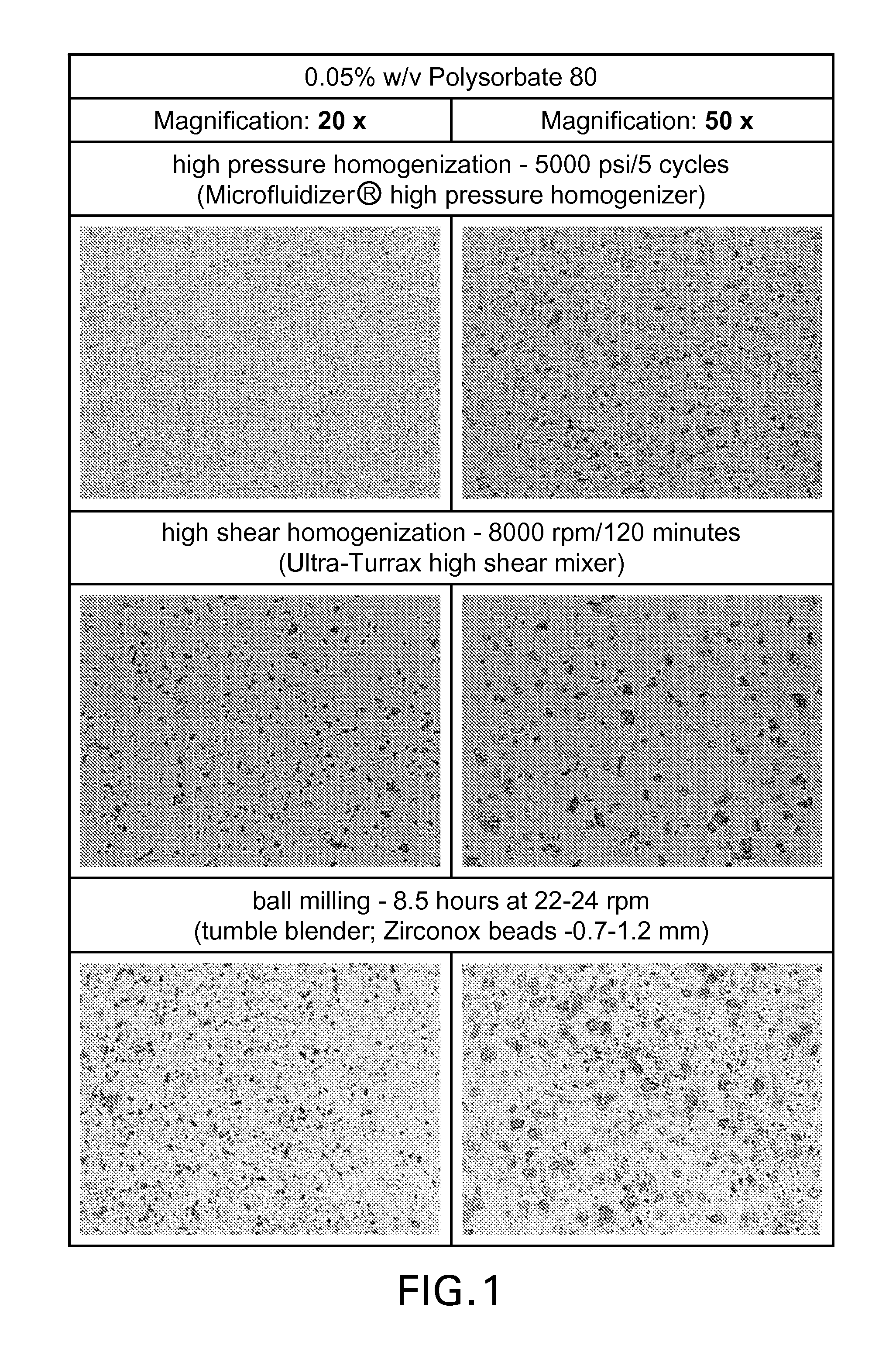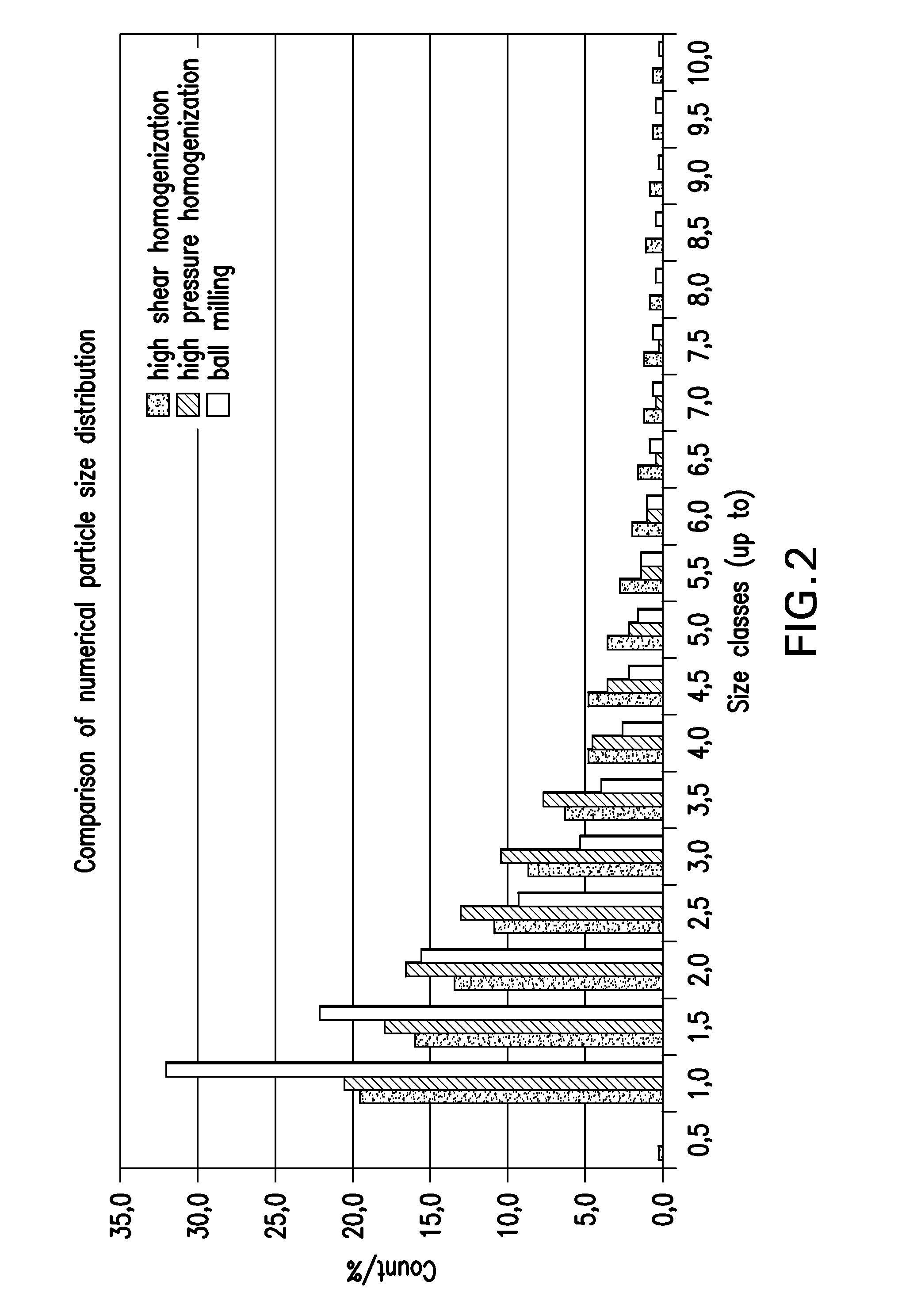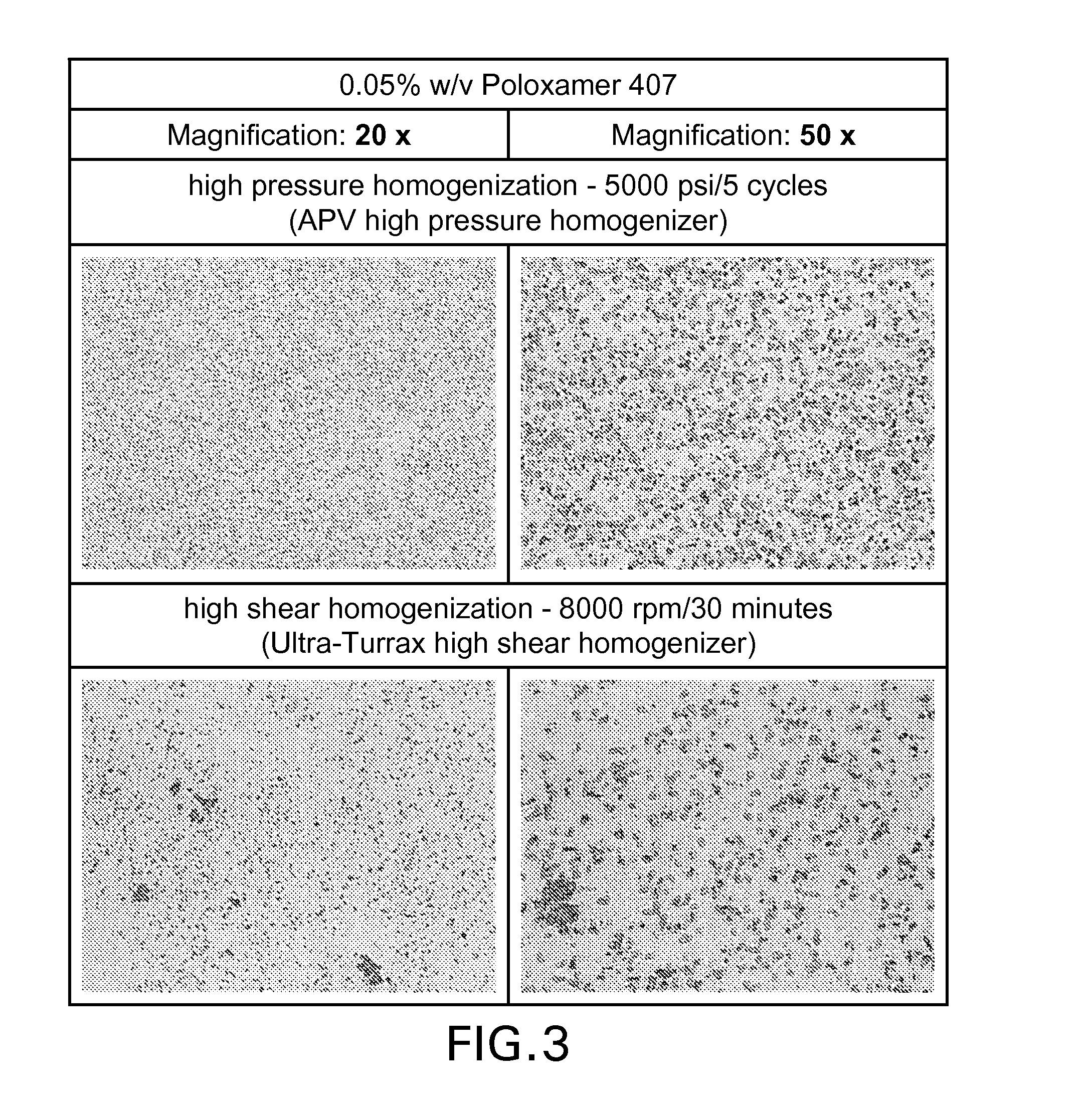Ophthalmic formulations and processes for their preparation
a technology of ophthalmic formulations and processes, applied in the field of preparing ophthalmic formulations, can solve the problems of drug degradation and the risk of drug particles forming aggregates, and achieve the effects of stable suspension of drugs, uniform particle size distribution, and high pressur
- Summary
- Abstract
- Description
- Claims
- Application Information
AI Technical Summary
Benefits of technology
Problems solved by technology
Method used
Image
Examples
example 1
Effect of Different Homogenization Techniques on Particle Size Distribution of Brinzolamide in Brinzolamide Ophthalmic Suspension
[0106]In Examples 1.1, 1.2 and 1.3, brinzolamide ophthalmic suspensions were prepared by using three different homogenization techniques (high pressure homogenization in accordance with the present invention, high shear homogenization and ball milling) in order to test the effectiveness these techniques on de-agglomeration of brinzolamide particles and coating of the particles with wetting agent. Three different wetting agents were used (Polysorbate 80, Poloxamer 407 and Tyloxapol). Particle size analyses were conducted by microscopy.
example 1.1
Wetting Agent—Polysorbate 80
[0107]In this example, a brinzolamide ophthalmic suspension was prepared in a 0.05% aqueous solution of Polysorbate 80 as wetting agent by the following three methods Prior to the treatment below, the suspension contained agglomerates of brinzolamide wherein the agglomerates have a particle size of greater than 10 μm (and hence are unsuitable for use in topical ophthalmic formulations), wherein the particle size distribution of the individual brinzolamide particles is d90≦3.0 μm. Portions of the suspension were treated separately by the following three methods (i)-(iii):[0108](i) high pressure homogenization (5000 psi / 5 cycles using Microfluidizer® high pressure homogenizer)[0109](ii) high shear homogenization (8000 rpm / 120 minutes (Ultra-Turrax high shear mixer)[0110](iii) ball milling (8.5 hours at 22-24 rpm (tumble blender; Zirconox beads: 0.7-1.2 mm)
[0111]Microscopic images of the suspensions at 20× and 50× magnification are shown in FIG. 1.
[0112]A co...
example 1.2
[0115]In this example, a brinzolamide ophthalmic suspension was prepared in a 0.05% w / v aqueous solution of Poloxamer 407 as wetting agent by the following methods:[0116](i) high pressure homogenization (5000 psi / 5 cycles using APV high pressure homogenizer)[0117](ii) high shear homogenization (8000 rpm / 30 minutes (Ultra-Turrax high shear mixer)
[0118]Microscopic images of the suspensions at 20× and 50× magnification are shown in FIG. 3.
PUM
| Property | Measurement | Unit |
|---|---|---|
| particle size | aaaaa | aaaaa |
| temperature | aaaaa | aaaaa |
| temperature | aaaaa | aaaaa |
Abstract
Description
Claims
Application Information
 Login to View More
Login to View More - R&D
- Intellectual Property
- Life Sciences
- Materials
- Tech Scout
- Unparalleled Data Quality
- Higher Quality Content
- 60% Fewer Hallucinations
Browse by: Latest US Patents, China's latest patents, Technical Efficacy Thesaurus, Application Domain, Technology Topic, Popular Technical Reports.
© 2025 PatSnap. All rights reserved.Legal|Privacy policy|Modern Slavery Act Transparency Statement|Sitemap|About US| Contact US: help@patsnap.com



